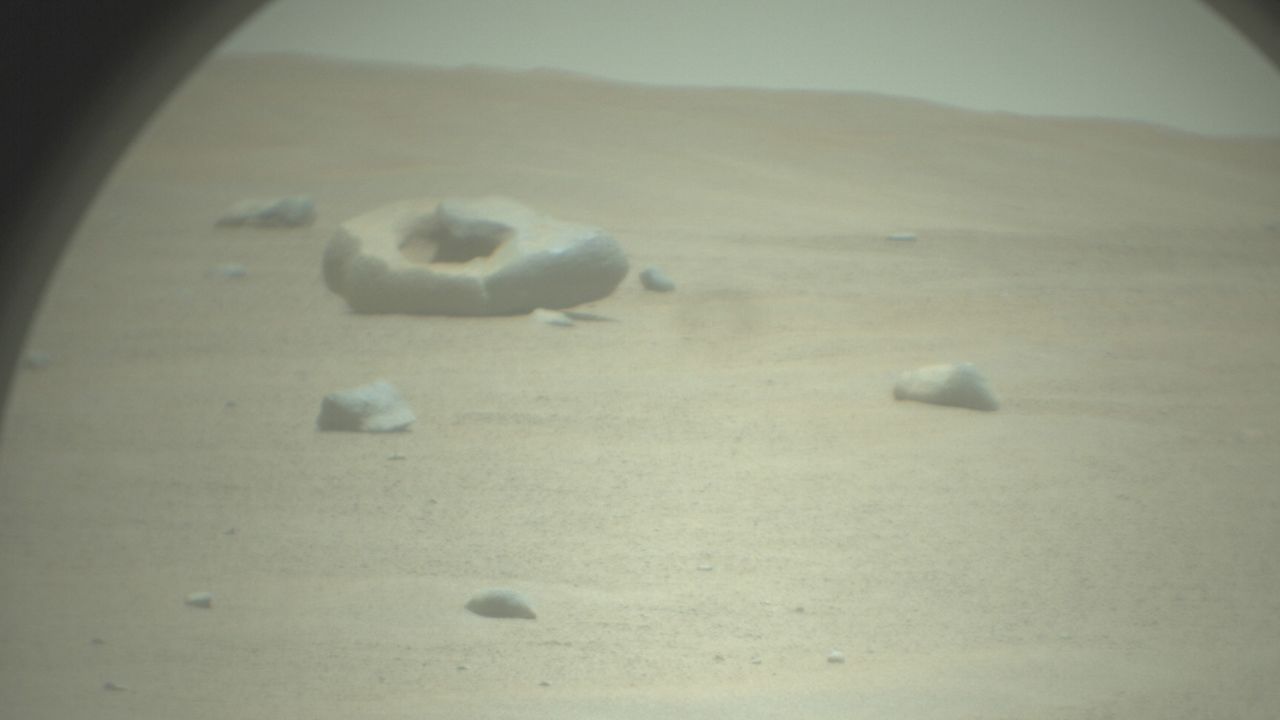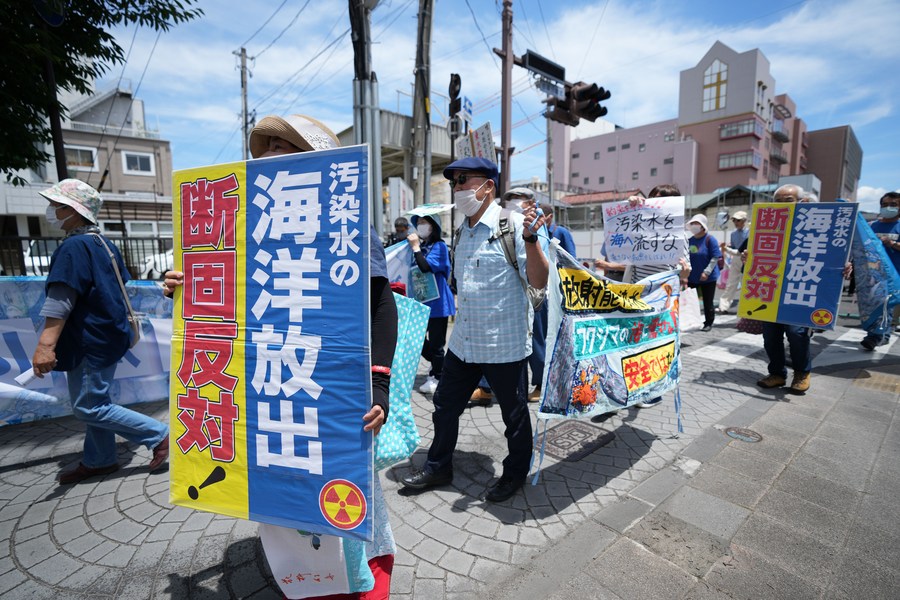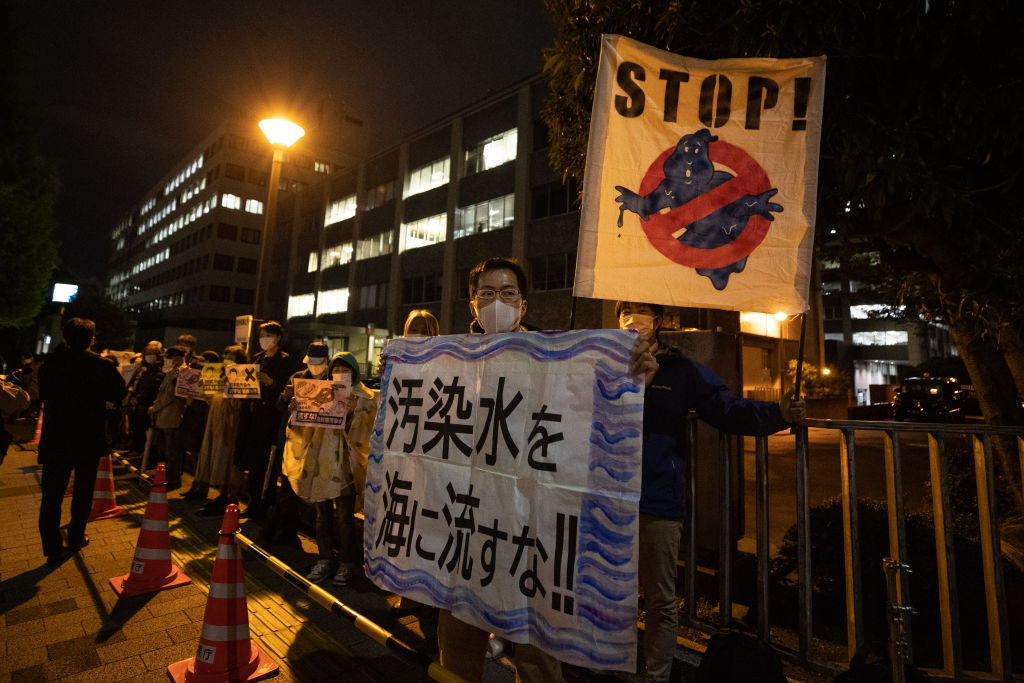By Kristen Rogers, CNN
Thu June 29, 2023

NASA’s Mars Perseverance rover captured this image June 23 in the red planet's Jezero Crater using its SuperCam Remote Micro-Imager camera.
An image captured by the Mars rover Perseverance shows a mysterious doughnut-shaped rock on the red planet’s surface.
Launched in July 2020, the Mars Perseverance rover continues to explore the planet’s 28-mile-wide (45-kilometer-wide) Jezero Crater for signs of ancient microbial life, according to NASA. The rover collects samples of rock and broken rock and soil (called regolith) for possible return to Earth by a future Mars mission.
The Mars “doughnut” is one of the latest objects captured about 100 meters (roughly 328 feet) away in the delta of the Jezero Crater by the SuperCam Remote Micro-Imager — one of the rover’s cameras helping scientists see what’s on the planet’s surface.
The Perseverance team hasn’t made the rover go closer to the doughnut-shaped rock to examine or sample it, so its exact makeup and origins are unknown, said Jim Rice, an assistant research scientist in the School of Earth and Space Exploration at Arizona State University. Rice, who is on the rover’s Mastcam-Z imaging team, first spotted the rock on June 14.
Scientists have a few hypotheses as to where the rock came from — and where it didn’t.
“I can’t say with absolute, 100% certainty it’s not a meteorite, but I think it’s highly unlikely,” Rice said. “The reason I say that is because, this region we’re in, we see a lot of rocks that have these kind of hollowed-out interiors.”
The typical rocks in this region are sedimentary sandstones that are likely a few billion years old, Rice said. “Those were brought in by floods by this big river channel, the Neretva Vallis — that’s the channel that brought all the water and the rocks and sediment in there.”

Virgin Galactic has sold 800 tickets to the edge of space. The first customers just took flight
The river channel likely transported the doughnut-shaped rock from another area, he added. The rock is larger than 25 centimeters (nearly 10 inches) wide, but exactly how much larger is unknown, Rice said.
Another rock could have been embedded in the center of the doughnut-shaped rock before weather eroded it, leaving a cavity, he added. Wind can also gradually enlarge any small pits or cavities that were already there. Or the rock could have just been weaker in its center.
“Really, scientifically, it’s not anything special,” Rice said.
Pascal Lee, a senior planetary scientist at the SETI Institute, said he thinks the rock could be a meteorite, given past sightings of meteorites on Mars, and the planet’s proximity to the asteroid belt and capacity to preserve meteorites.

An observatory in Antarctica reveals ‘ghostly’ new portrait of the Milky Way
The rock is surrounded by smaller rocks or fragments, “so maybe (it’s) a meteorite that broke up upon landing,” Lee said. In this case, the doughnut shape could have been created by weaker materials in the rock eroding upon entering Mars’ atmosphere, he added.
It’s also possible that the rock was “thrown away from another part of Mars by the impact of a large asteroid,” Lee said. “It’s called an ejecta block. … I would recommend that Perseverance divert from its current course to check it out.”
The rover team has no plans to do so, as it’s currently driving Perseverance in the opposite direction toward boulders it will eventually sample, Rice said.
The Mars doughnut isn’t the only pastry-shaped rock that has been found on the planet. In 2014, NASA’s Opportunity rover spotted a small rock that’s white on the outside, with a red interior — like a jelly doughnut, Lee said.
 (
(
















